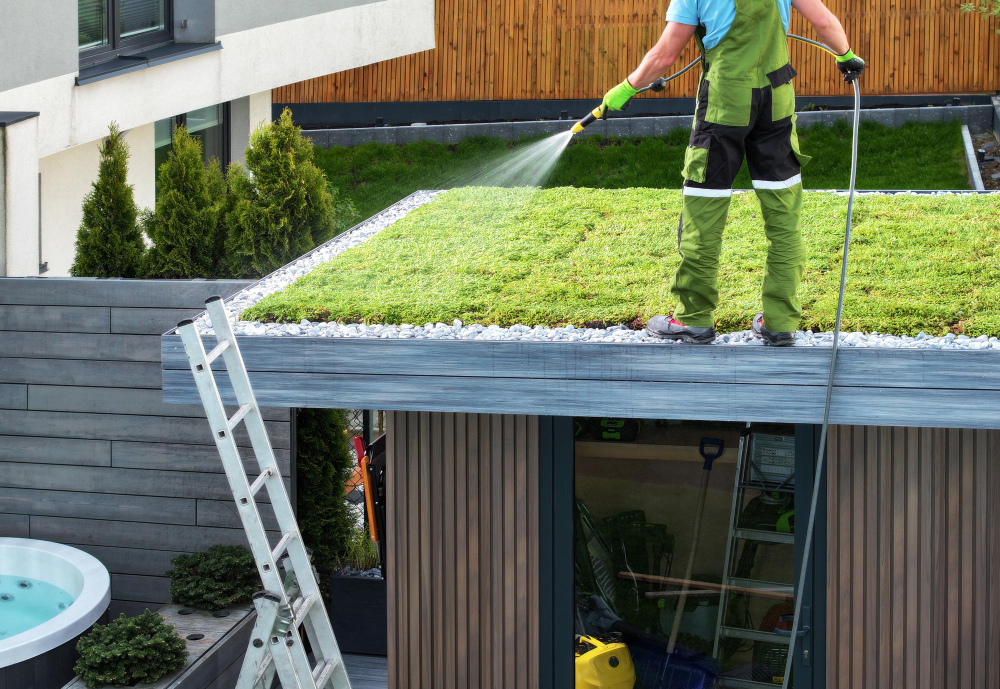Last updated on
Green roofing has emerged as a revolutionary concept in pursuing sustainable living and environmental consciousness beyond mere trendiness. Far more than an aesthetic choice, green roofing encompasses a spectrum of ecological, economic, and social benefits that make it a critical component in modern urban design.
This article explores the multifaceted dimensions of green roofing, delving into its environmental impact, energy efficiency, economic advantages, and the positive influence it can exert on the well-being of urban communities.
Energy Efficiency

Traditional roofs, particularly those made of dark materials, absorb and retain heat, contributing to the urban heat island effect. Green roofs, with their vegetation and soil layers, act as natural insulators, regulating indoor temperatures and reducing the need for excessive air conditioning.
This inherent temperature moderation translates into energy savings for buildings, making green roofing a practical solution for energy-efficient urban living.
Nevertheless, there are also other materials suitable for an energy-efficient roof. In choosing the right roofing material for your home, seasoned roofers suggest asphalt shingles or metal roofing to maximize energy efficiency.
Asphalt shingles are a popular choice for their cost-effectiveness and durability. Meanwhile, metal roofing offers longevity and a high level of reflectivity, helping to bounce back a significant portion of the sun’s rays.
Environmental Impact
One of the primary ecological benefits of green roofing lies in its ability to provide habitat and support for local biodiversity. Traditional roofing materials contribute to the heat island effect in urban areas, creating inhospitable environments for plant and animal life.
Green roofs, however, act as miniature ecosystems, fostering vegetation growth that attracts pollinators, insects, and even small birds. This not only aids local ecosystems but also contributes to the overall health of urban biodiversity.
Green roofs also act as natural air filters, capturing pollutants and particulate matter from the air. The vegetation on the roof absorbs carbon dioxide during photosynthesis, releasing oxygen and enhancing air quality. Green roofing provides a tangible solution to mitigate the adverse effects of poor air quality.
Economic Advantages

The installation of green roofs has been shown to increase the value of properties. The aesthetic appeal, energy efficiency, and environmental benefits of green roofing make properties more attractive to potential buyers or tenants.
As sustainable living becomes a priority for many, the demand for environmentally conscious features like green roofs is likely to drive up property values in the long run. The energy efficiency of green roofs directly translates into cost savings for building owners.
With reduced reliance on artificial heating and cooling systems, energy bills decrease, offering a tangible economic incentive for adopting green roofing solutions. Over time, the initial investment in green roofing can be offset by ongoing energy savings, making it a financially prudent choice for property owners.
Social Well-being
Beyond the environmental and economic advantages, green roofs contribute to the overall aesthetic appeal of urban landscapes. The visual impact of lush vegetation against the backdrop of concrete and steel enhances the quality of life for residents.
Some green roofs are also designed with recreational spaces, providing residents with tranquil areas for relaxation, socializing, or engaging in recreational activities. Green roofs offer opportunities for community engagement and involvement in sustainable initiatives.
Residents can actively participate in maintaining and cultivating rooftop gardens or green spaces, fostering a sense of community ownership and environmental responsibility.
Green roofing represents a paradigm shift in urban design, transcending its status as a mere trend to become a cornerstone of sustainable living. As cities grapple with the need for sustainable and resilient infrastructure, adopting green roofing practices emerges as a pragmatic and forward-thinking approach, promising a greener, healthier, and more vibrant urban future.
Beyond the aesthetic allure, green roofing is a catalyst for positive change, demonstrating that sustainable living is an aspiration and an attainable reality for the cities of tomorrow.
Table of Contents




